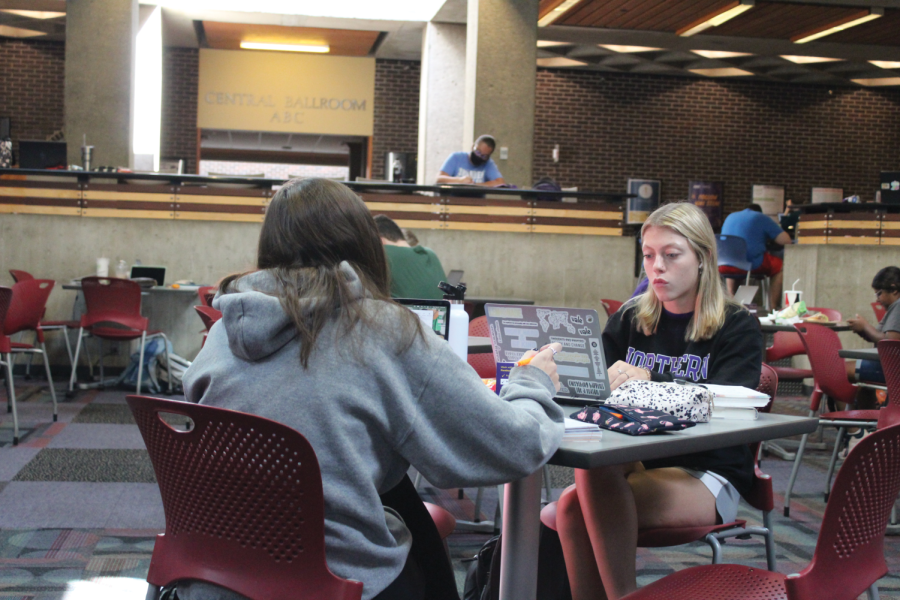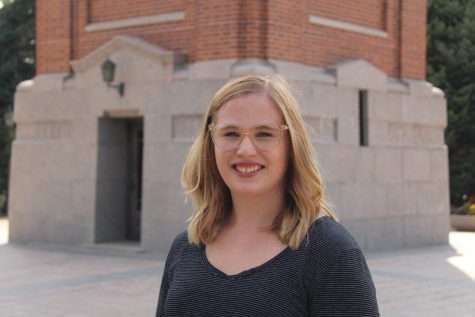Should current students make the switch to UNIFI?
Students will have more flexibility and more credentials with the new UNIFI program. UNIFI is also transfer-friendly to transfer students.
Apr 14, 2022
UNI is currently in the process of switching general education requirements. The University Foundational Inquiry, or UNIFI, is the replacement for the old Liberal Arts Core, or LAC. Starting in the fall of this year, all incoming students will use UNIFI. Current students, however, have a choice to stay with the LAC or switch to UNIFI. This article will look at the benefits of UNIFI versus the LAC and whether or not students should switch.
The LAC required 45 credits, which included six broad categories and 14 subcategories. Each subcategory had around five choices, with some having more options and some having less. According to UNI’s website about the UNIFI program, UNIFI has three broad learning areas, called Engage, Discover and Connect, containing eight subcategories of courses. One key difference is that while all of the credits in LAC are contained in specific subcategories, the Connect learning area of UNIFI gives either the option of a multidisciplinary certificate containing 9-12 credits or 12 elective credits. Also, most subcategories in UNIFI contain much more options than LAC, especially in the Discover learning area. For example, one category in Discover called Human Expression, which seems to have been loosely translated from the LAC subcategory Fine Arts, currently has 13 course options compared to the LAC category’s five options.
The chief argument for UNIFI is its flexibility. Jeremy Schraffenberger, the Curriculum Coordinator for the UNIFI program, said a more flexible program was the goal from the beginning. Speaking specifically about the Connect learning area of UNIFI, he said, “It’s a really nice balance of student choice as well as student freedom.”
One benefit to switching from the LAC to UNIFI is that nearly all of the courses carry over from the LAC to UNIFI, so even if a student is almost done with their LAC requirements, the likelihood is that they are also almost done with UNIFI requirements. Obviously, each student’s case is different, so talking to an advisor before making a decision is encouraged.
Another benefit of UNIFI’s flexibility and lower total credit requirements is the increased ability to have space for extra courses, majors and minors. “There was too much pressure on a lot of people who have majors that are pretty long. We needed to reduce the number of hours in the Gen Ed to help those students graduate on time,” Schraffenberger stated.
With the increased options for courses to fulfill requirements, a student can emphasize courses from one department that can also count for their major. For example, if a student wanted to take a lot of history courses that could count to a history major, 21 of the required 37 credits could be history courses. For an English major, 24 of the required 37 credits could be English courses. These are just examples, as several categories contained courses from many different departments. Schraffenberger also said that as data comes in on which courses students choose, more new courses could be added to give even more options.
One potential drawback to UNIFI is that the learning area names seen kind of vague and can be confusing to students. A student may see Discover, Connect or Engage and wonder what that really means. Schraffenberger admitted that at first the names don’t explain themselves, but expressed hope that people will adjust to the names and requirements, just as they did with the LAC.
One other potential obstacle students may see when deciding whether or not to switch is that certain courses required for the LAC are not mentioned in the listed courses for UNIFI learning areas. Students who already took Capstone, KAHHS or Humanities courses may not want to switch because they may not realize those courses carry over. However, all of these courses do carry over. A Capstone course combined with a KAHHS course meets the Responsibility requirement. Humanities courses can fill in as electives in the Connect learning area if a student does not want to pursue a certificate, according to Schraffenberger. Some of these courses will fade out over the next few years, but some Capstone courses will live on in specific departments instead of being listed as a Capstone course.
The reason some courses met specific requirements and others can only be used as Connect electives is because faculty and department heads proposed the courses through a rigorous proposal process. Schraffenberger said, “It’s a good incentive for faculty to teach new things and to innovate, and not just to rely on what they’ve done for many years.”
So, circling back to the original question of whether to switch to the UNIFI program or not, the answer for the most part seems to be to make the switch. Although cases vary with different students, because UNIFI is more flexible and includes most of the courses required by LAC, it makes sense as an alternative. Even if somebody only needs one or two courses to complete both, just having extra options available could be beneficial. The most important thing is to do one’s own research and talk to an advisor, so that the student can make an informed decision.










